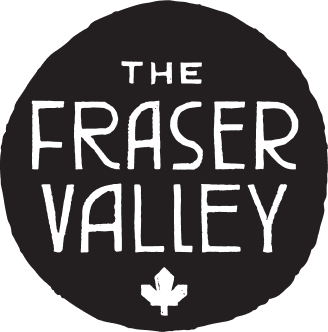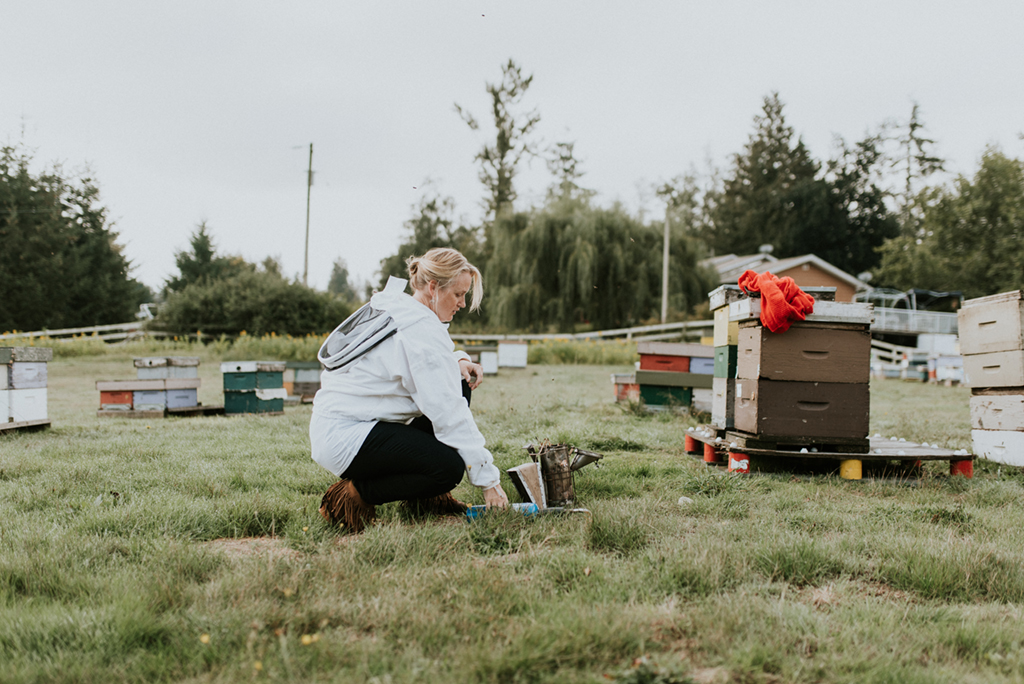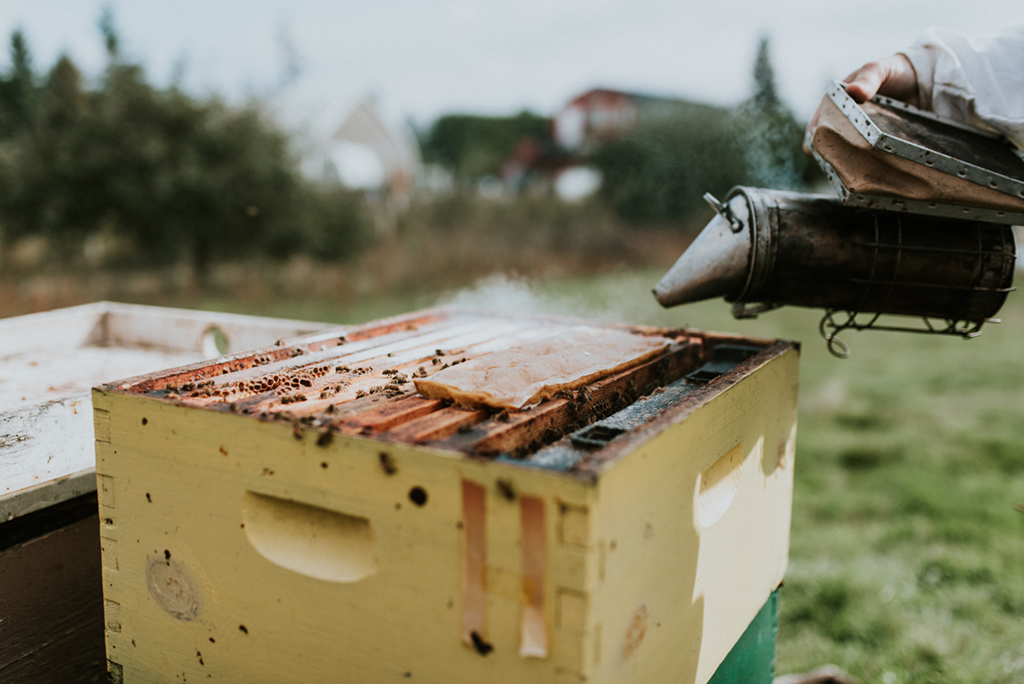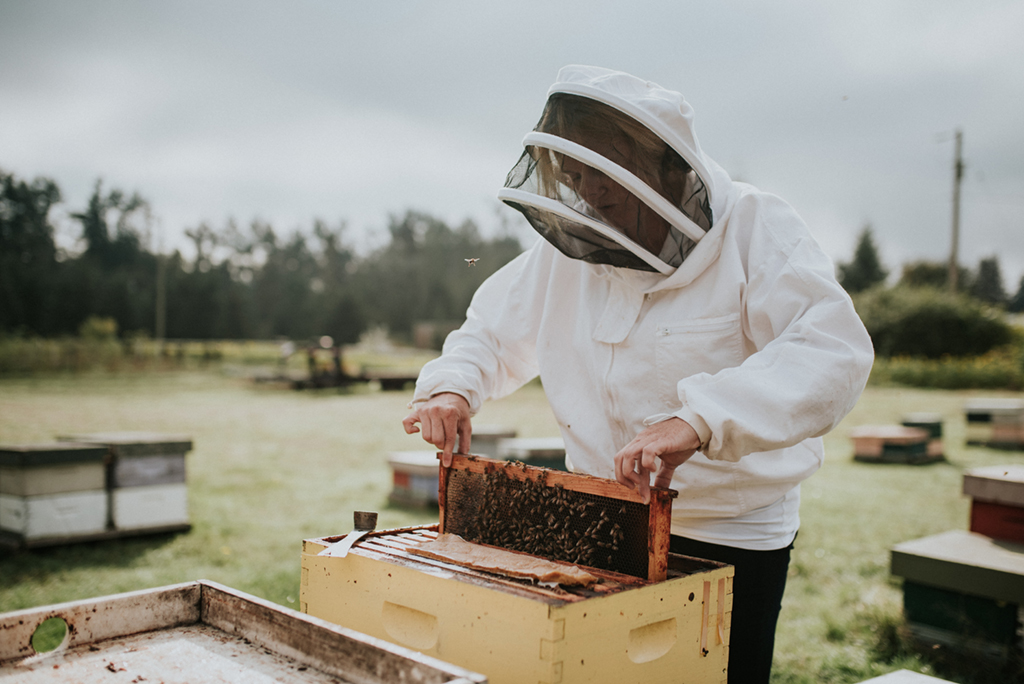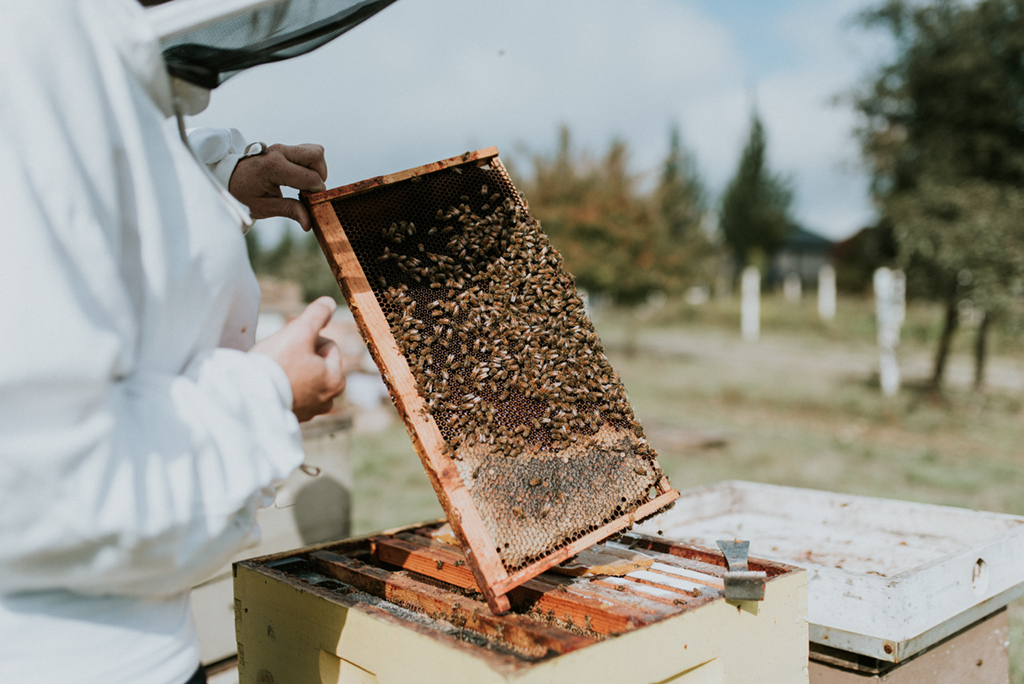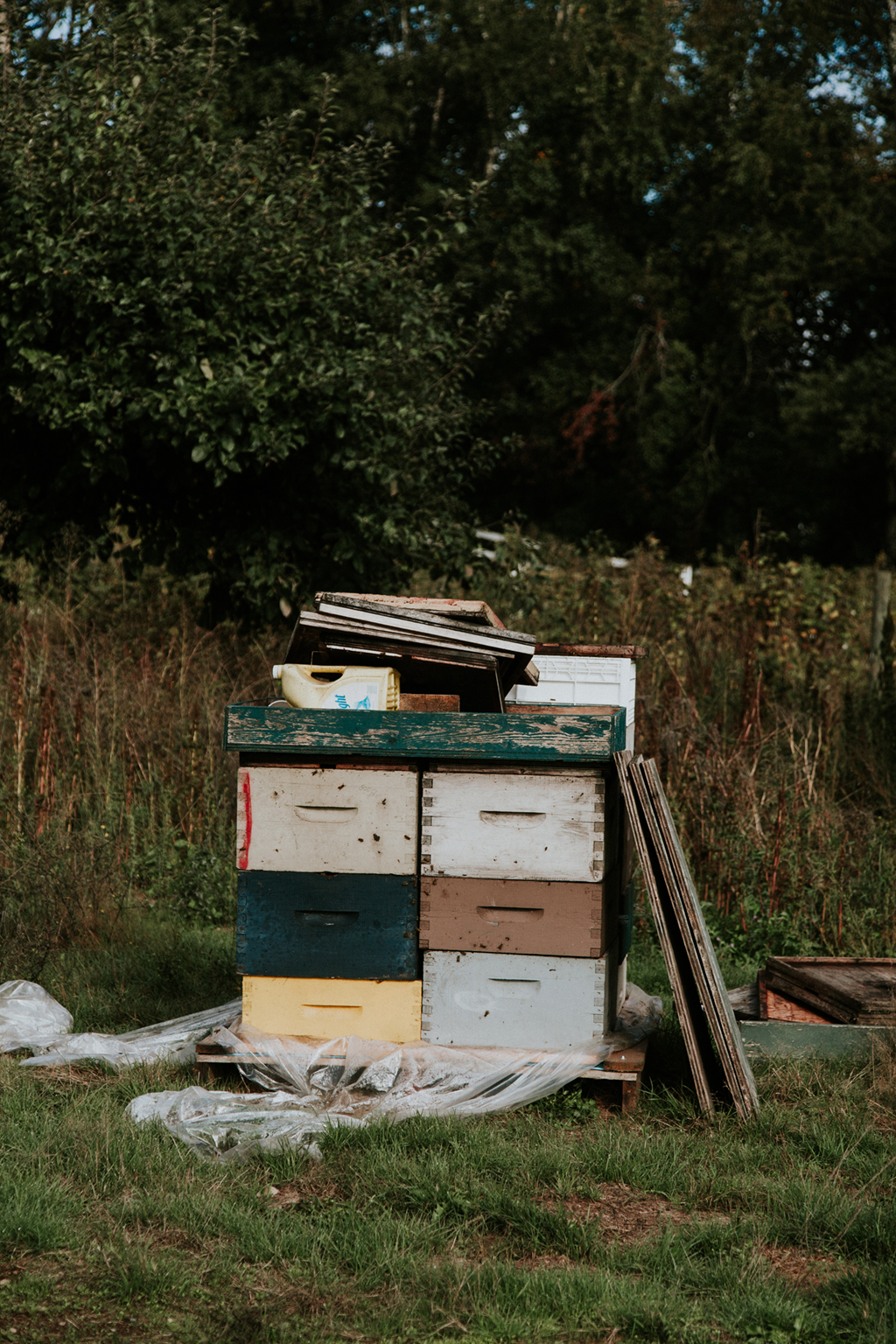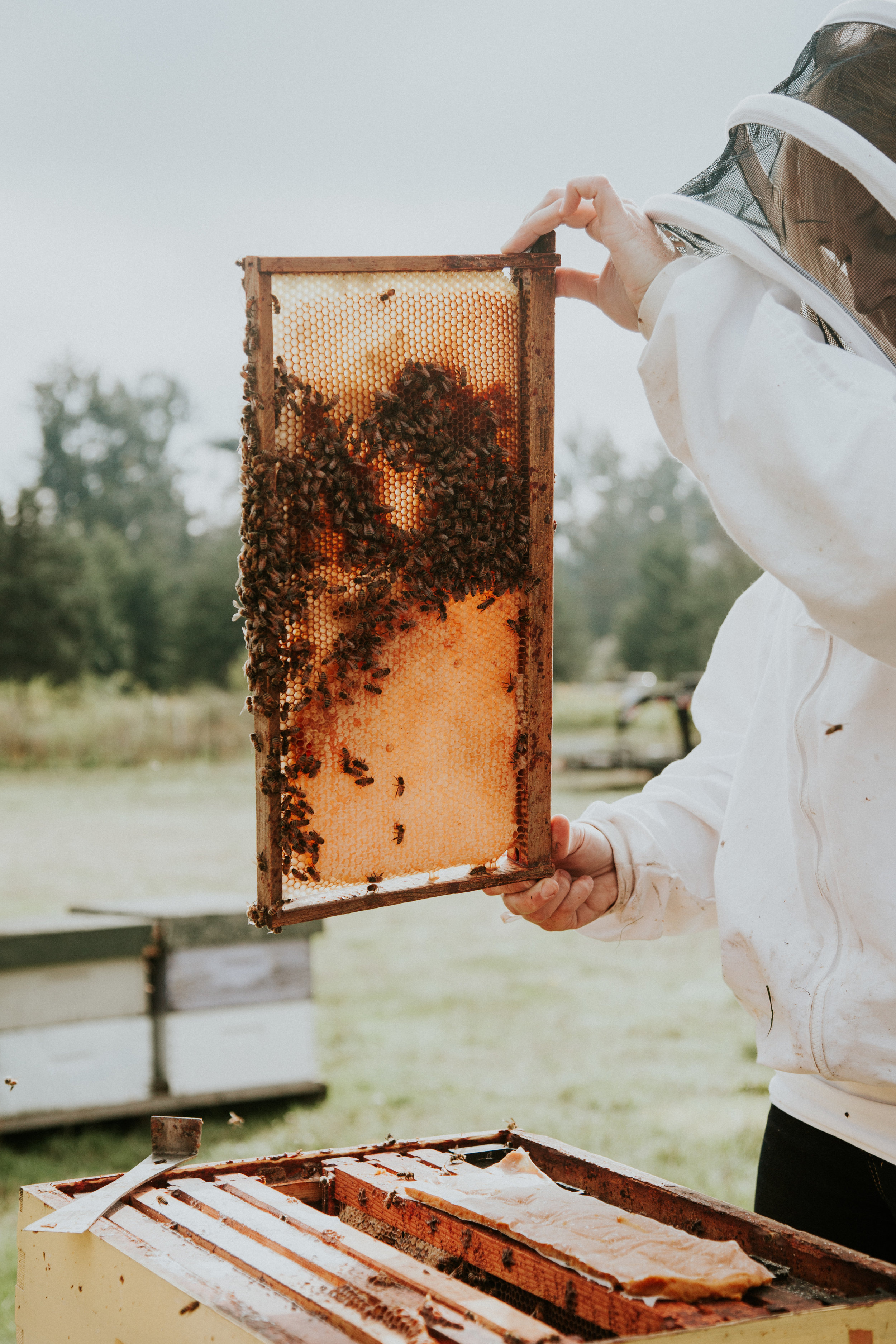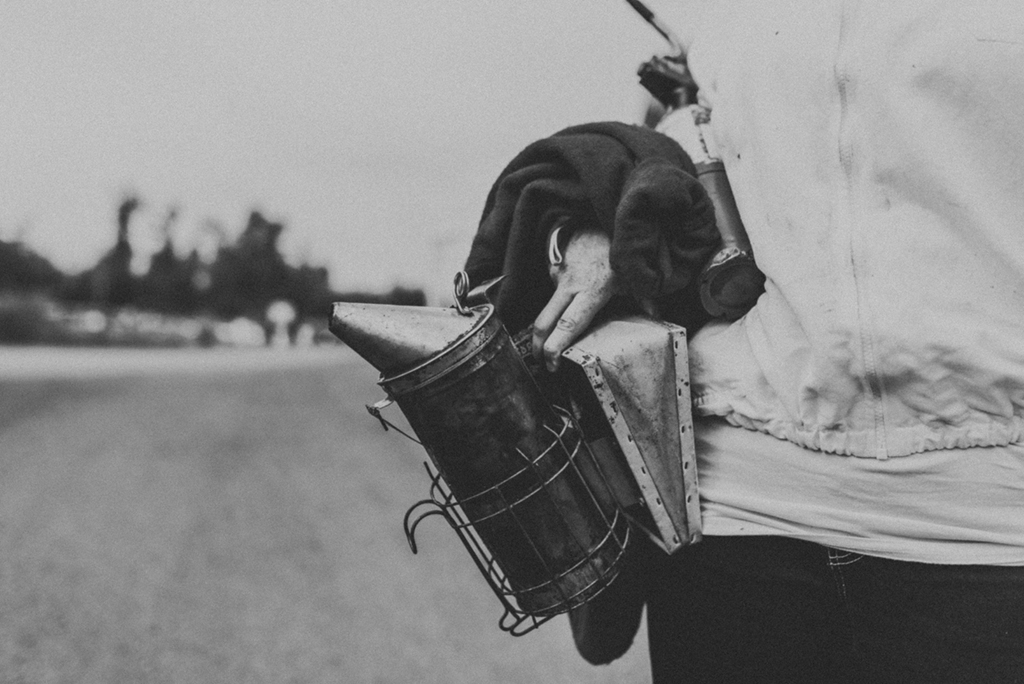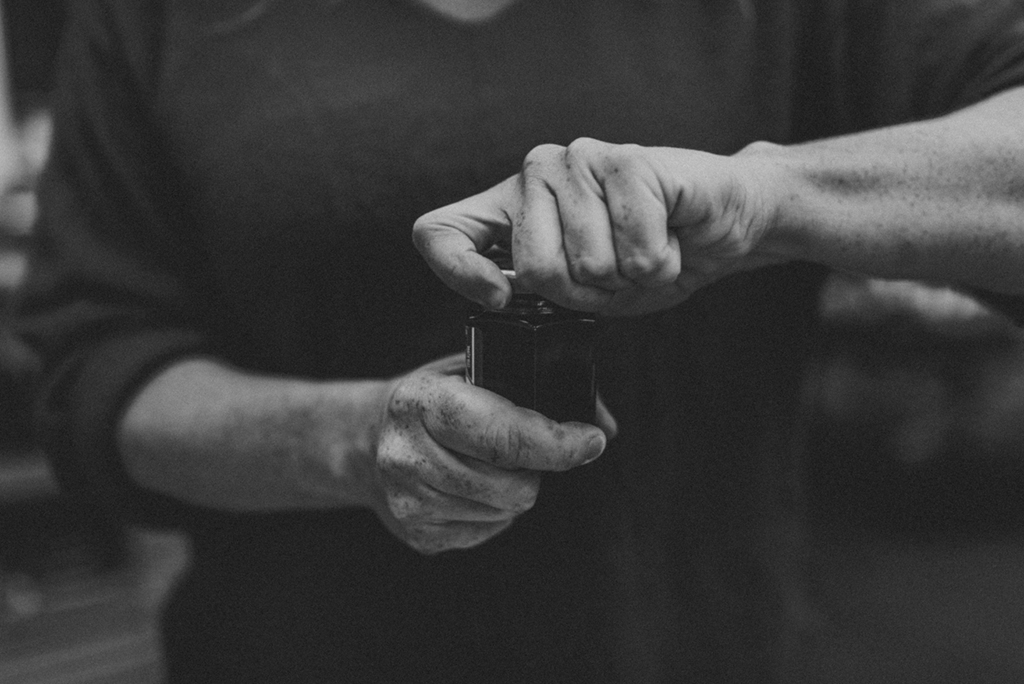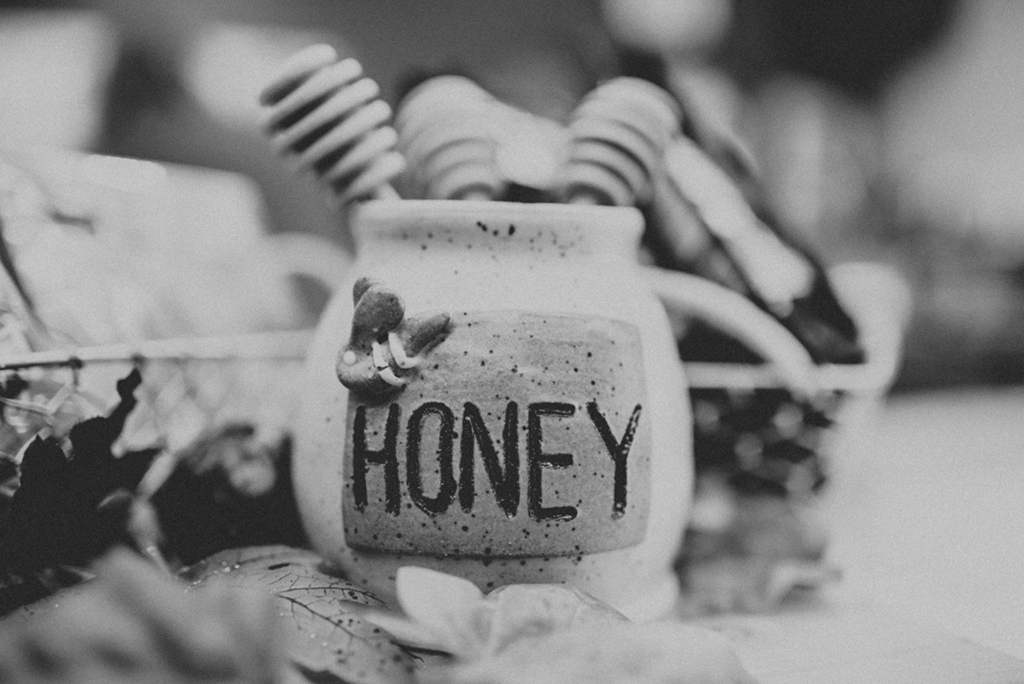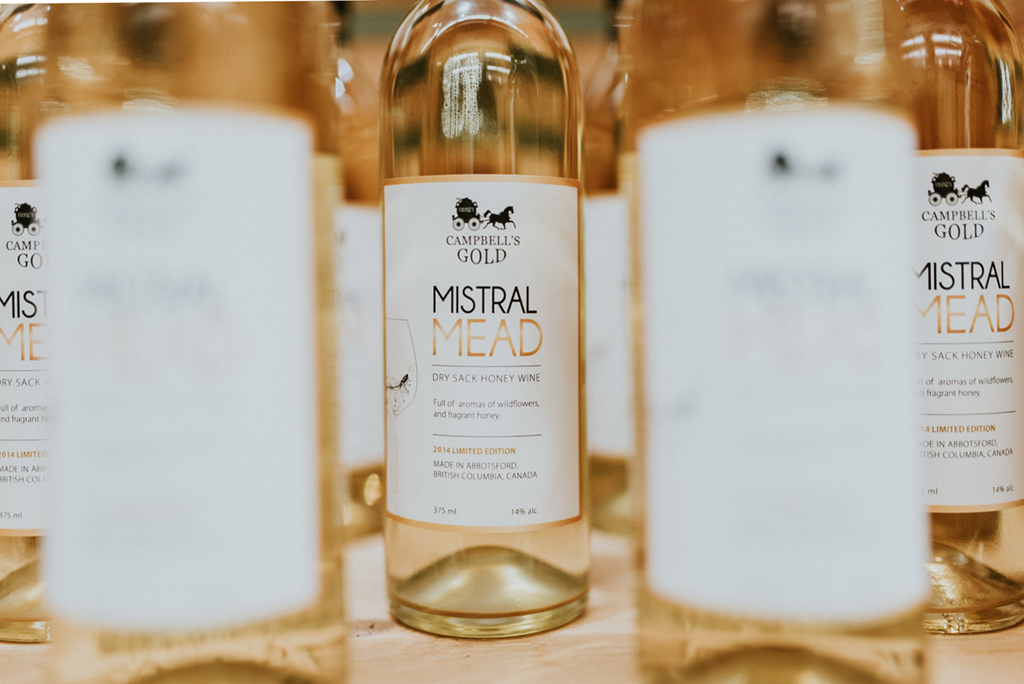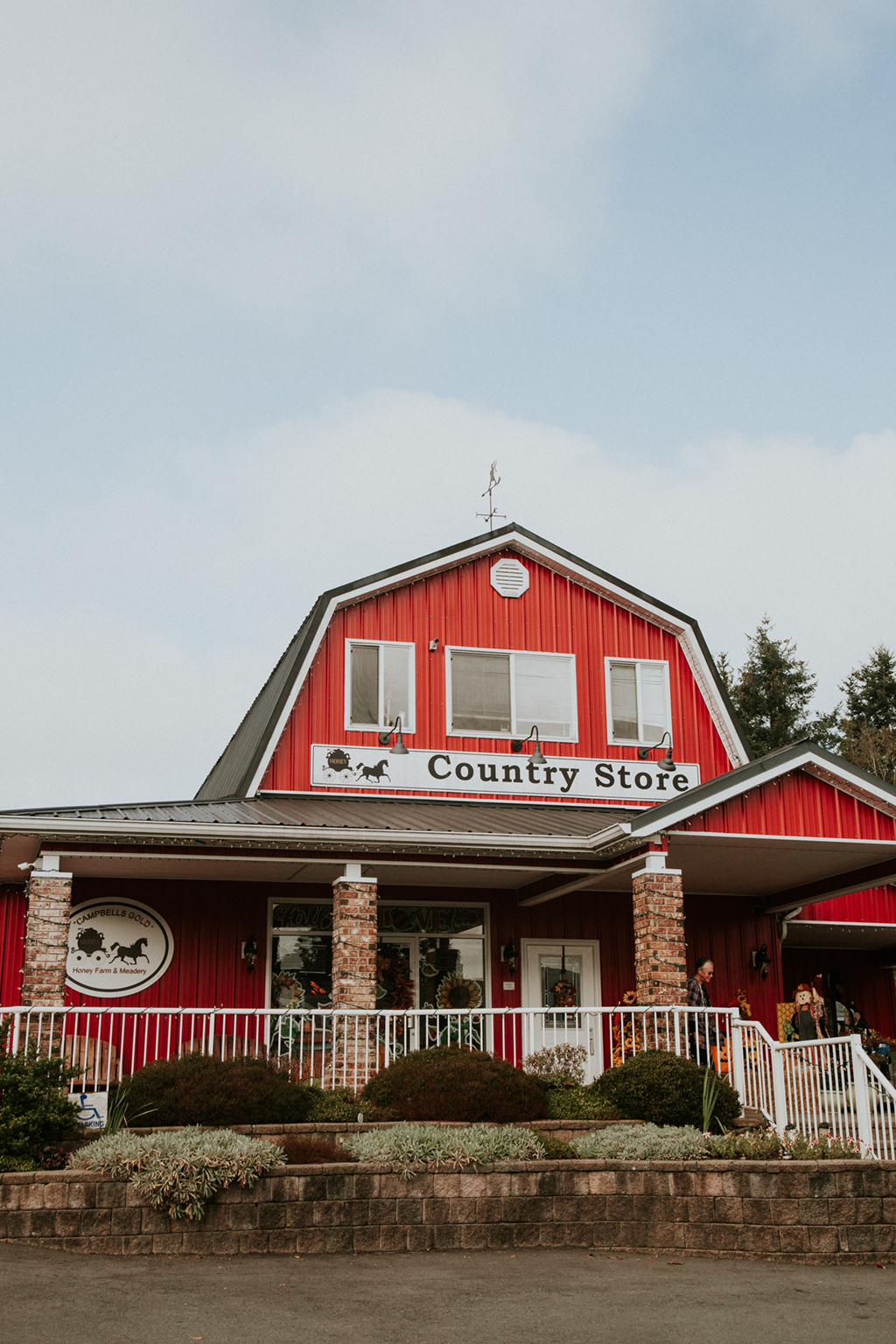Beekeepers, mead makers, and honey connoisseurs — these are just a few ways to describe Mike, Judy and Jenny Campbell of Campbell’s Gold Honey Farm & Meadery. Saying they’re experts of their craft is an understatement. From the moment we arrived, to waving goodbye, we couldn’t help but absorb all the honey knowledge they had to share. We started our time with Judy and Jenny by the sunflowers, watching the bees pollenate. Then, amongst the gentle hum of the buzz, we headed to the honey farm to join Jenny as she inspected the hives.
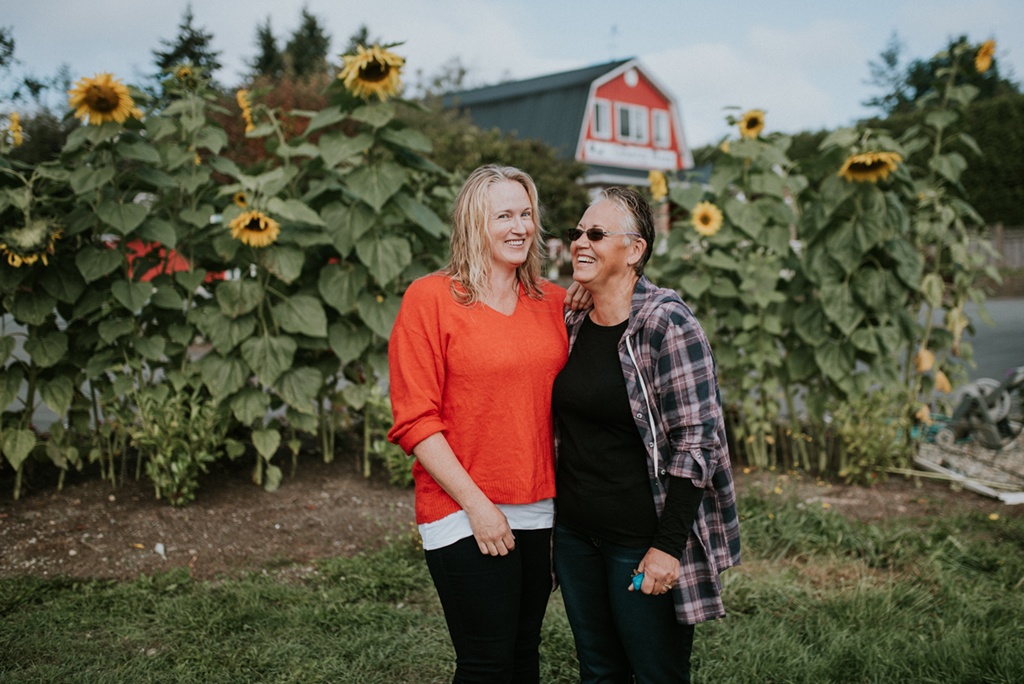
TFV: How did Campbell’s Gold Honey & Meadery begin? What do you all offer now?
CG: Campbell’s Gold Honey Farm began with the opening of the Country Store in 2006. Though Mike and Judy had been beekeeping, producing honey and making wine for years, they transformed their hobby into a business instead of fully retiring when they left their careers behind. In 2018 and beyond, the farm is an innovative place where learning and environmental stewardships are equally important as providing quality honey, as well as a wide variety of honey wines.
TFV: What are each of your roles in the company?
CG: Our roles are very fluid on the farm. We are each beekeeper, winemaker and wax-candlestick-maker. As a family we take care of the grounds and plan events together. Each of us takes turns in the Country Store as needed, as well as guiding the many types of educational tours for all ages. The work is never done here on the farm, so when one is busy (or exhausted) someone else fills in their shoes.
TFV: Can you explain briefly how the seasons and different flowers affect the kinds of honey you make and produce?
CG: The first colours of spring come from nutritious dandelions and purple heather, as well as some plum trees. Quickly followed by red, white and black currants. As those blooms fade, come wildflower blends as well as cherry and apple blossoms—different varieties which have slightly different bloom timings. We used to pollinate blueberry and cranberry fields each spring, but have since stopped due to concerns with how pesticide use was affecting the health of our bees. We do however continue to pollinate blackberries, lavender, and wildflowers and collect honey when the nectar flow ensures that there is plenty left over for the bees. Late in the season, squashes and pumpkins are a welcome nectar source for our bees and is the last kind of honey we will take from the hives. Each honey variety has a distinct aroma, colour and flavour as well as slightly different moisture content though all good honey should have between 14-17.8% moisture, otherwise it will eventually ferment.
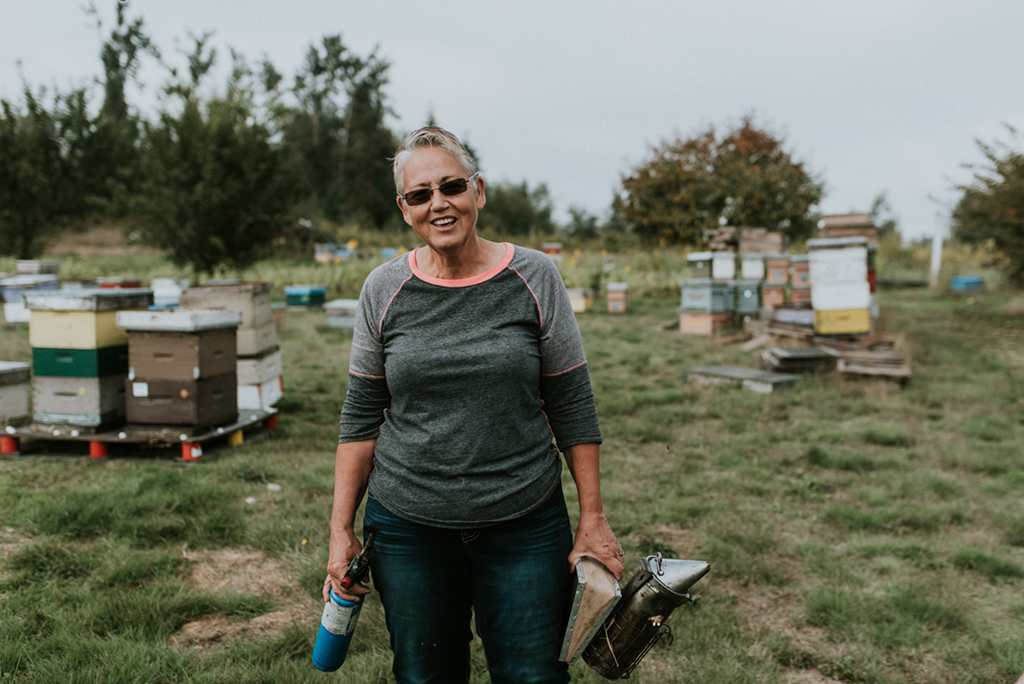
TFV: What is something the general public may not know about a honeybee?
CG: Worker honey bees are master navigators. They see the world in pixels from their two compound eyes, which is why an asymmetrical bee yard is a good idea. They can see five times faster than a human being (imagine looking out the side window while driving a car and actually being able to distinguish the landscape rather than seeing a blur). They have simple eyes called, “ocelli” on the top of their heads. Ocelli are sensitive to the sun’s movement and are also thought to navigate using star patterns. They also have heavy concentrations of iron in their abdomens which allow them to use the earth’s gravitational field to find their way around. Their vision works in the UV and infrared spectrum, and so, their favourite colours are orange and blue while leaving them red-blind (it looks black) They are only able to see white as a background and it is not very noticeable.
TFV: What made you decide to get into the Meadery side of business, instead of just focusing on making honey?
CG: Mike made his first batch of mead circa 1968 after finding an old doctor’s book recipe up at SFU. The elixir guaranteed to prevent, “baldness, loss of eyesight and old age”. “We’re still perfecting the recipe”, he says and laughs as he pushes his glasses up, pats his thinning comb-over and limps away. We’re always thinking of our bees, they are the heart of everything we do. So, we plant for them and they give us bucket loads of fruit in return. By turning our fruit into wine with honey, we both revive the oldest known form of alcohol for a modern palate, as well as ensure that nothing is wasted. We don’t spray with anything that could hurt our bees, but our fruit doesn’t have to be a certain size, colour, shape or look perfect in any way and it can be picked at its most juicy to ensure the most flavour possible.
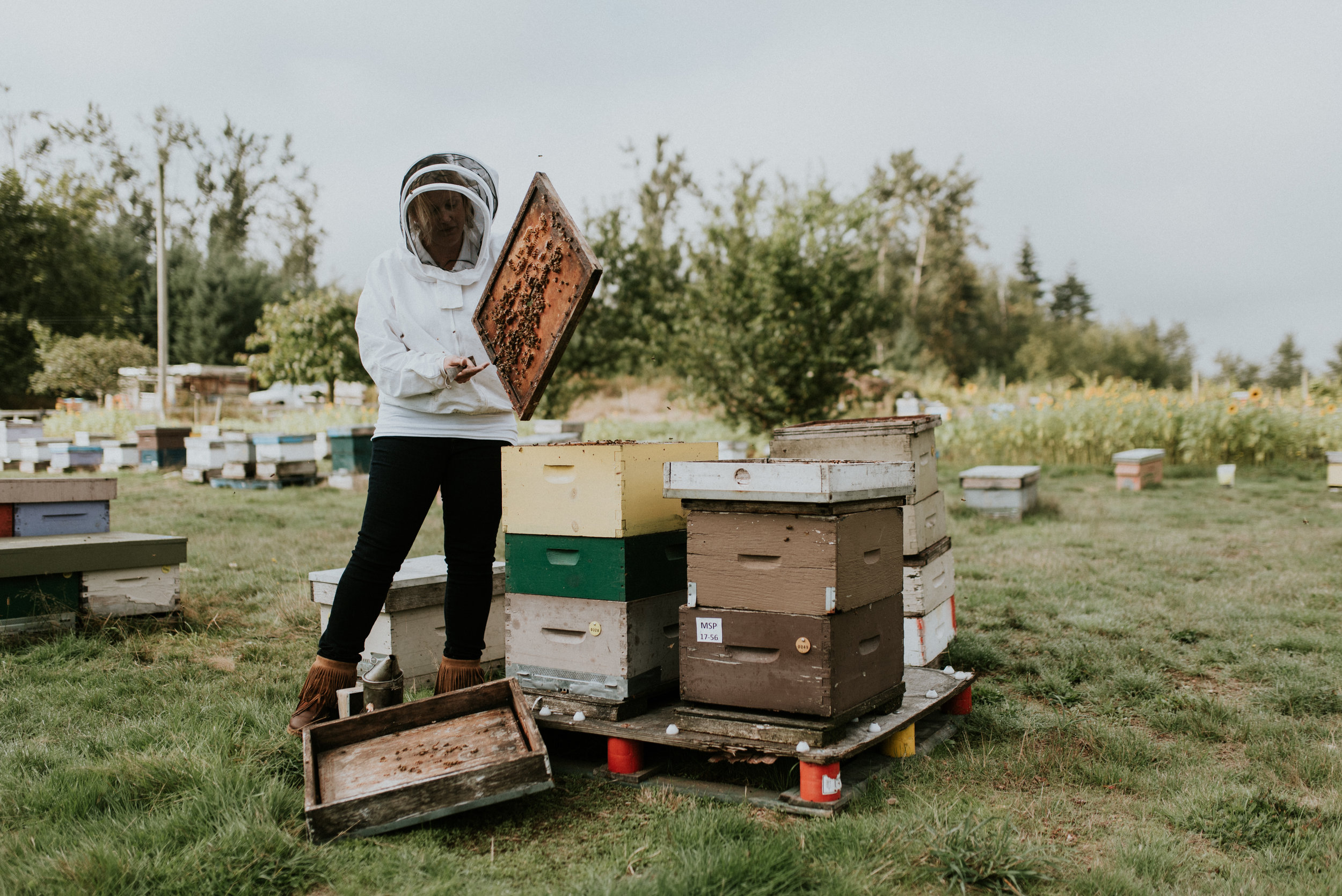
TFV: What is something each of you couldn’t live without adding honey to?
Judy: Tea.
Jenny: Tea.
Mike: Making Judy and Jenny’s tea.
TFV: What is your favourite honey wine that you make, and how would you suggest pairing it?
CG: We have a few favourites. The Black Beauty is a deep garnet coloured black currant melomel (honey wine with fruit). Imagine you’re in a spring meadow eating a green apple and that captures the essence of the drink. It’s bold in flavour and pairs beautifully with a meal heavy in garlic or sipped with some rich dark chocolate. Our Merry Mead (honey fermented without fruit) has a delicate flavour styled in the idea of nectar or dew on the skin of a nectarine. It’s floral fragrance and rich honey tones pair beautifully with strong smoky or smelly cheeses, with spicy dishes, game, and fruity desserts. Lastly, the Spice is Nice, a dry cranberry metheglin (honey wine and spice), is often described by customers as “Christmas in a bottle”. You can drink it cold or mull it with fresh oranges, brandy and honey to add warmth to a chilly fall/winter evening.
TFV: Can you tell us a little bit about your lives and other hobbies you have outside of the farm?
CG: Most of our free time is consumed by the many aspects of farm life. But Judy is getting her looms set up for some serious spinning and weaving. Mike has worked with a number of scientists in both the private sector and different universities to tackle some of the biggest threats to honey bee health. Jenny toils away at her writing.
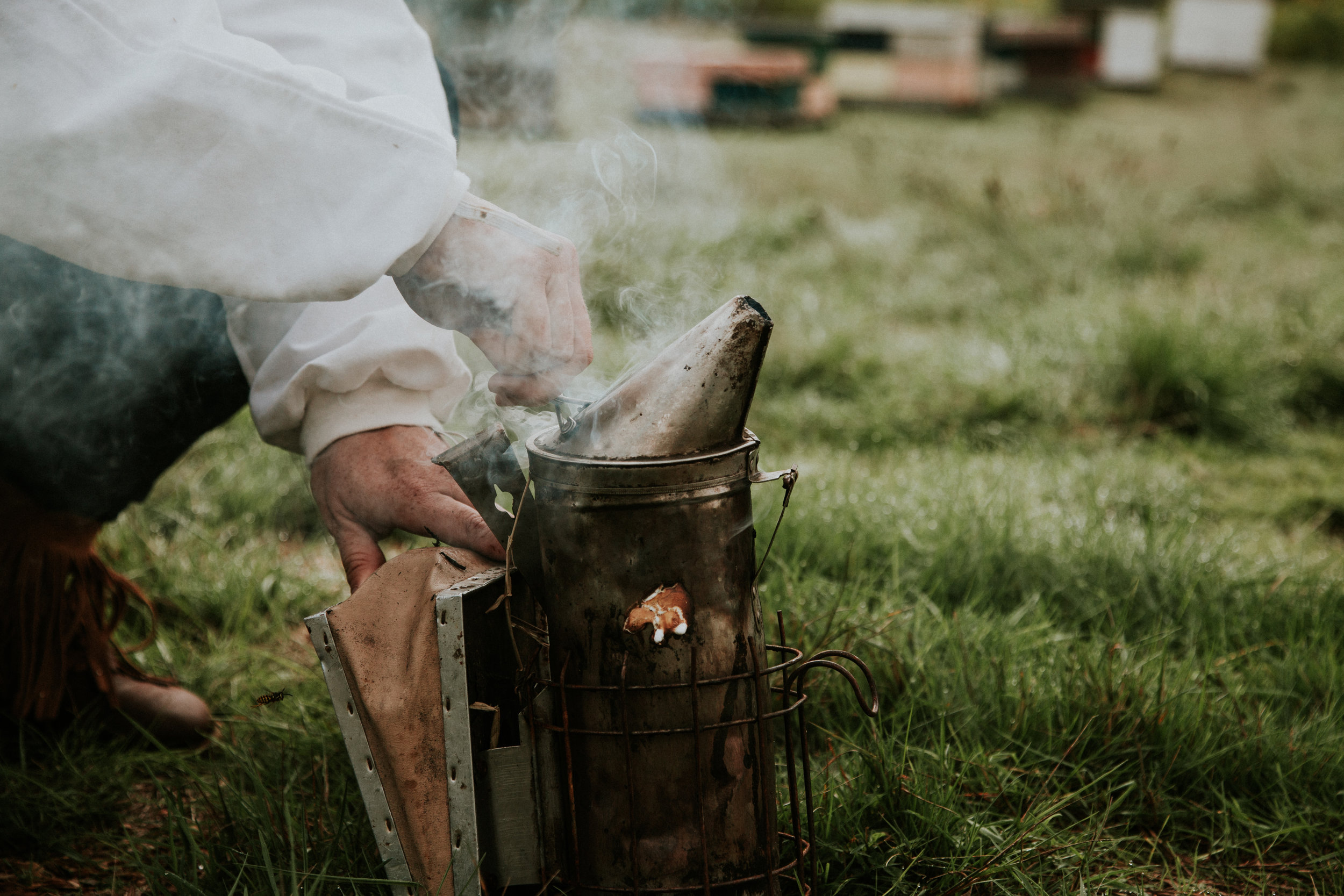
Blackberry or wildflower honey?
Blackberry, but only because it’s the last biggest best nutritional source for bees here in the Fraser Valley.
Morning or evening?
Morning, because there’s coffee and quiet.
Dry or sweet wine?
Off dry fits Mike and Jenny’s pallets best. Honey notes and flavours remain and offset the natural tartness of many of their favourite berries. Judy likes the sweeter versions, like our sweet red currant, “Ruby Slippers.”
Breakfast or dinner?
Breakfast, because we almost never get to have it. Greek yogurt, honey and whatever fresh berries happen to be growing.
Flowers or trees?
Weeds. Specifically, Sweet White Clover. All heirlooms are wonderful for bees, but Sweet White Clover fixes nitrogen into solid, renewing its fertility, as well as makes a long-lived, nutritious nectar source for bees. Not to mention it is one of the best honeys in the world.
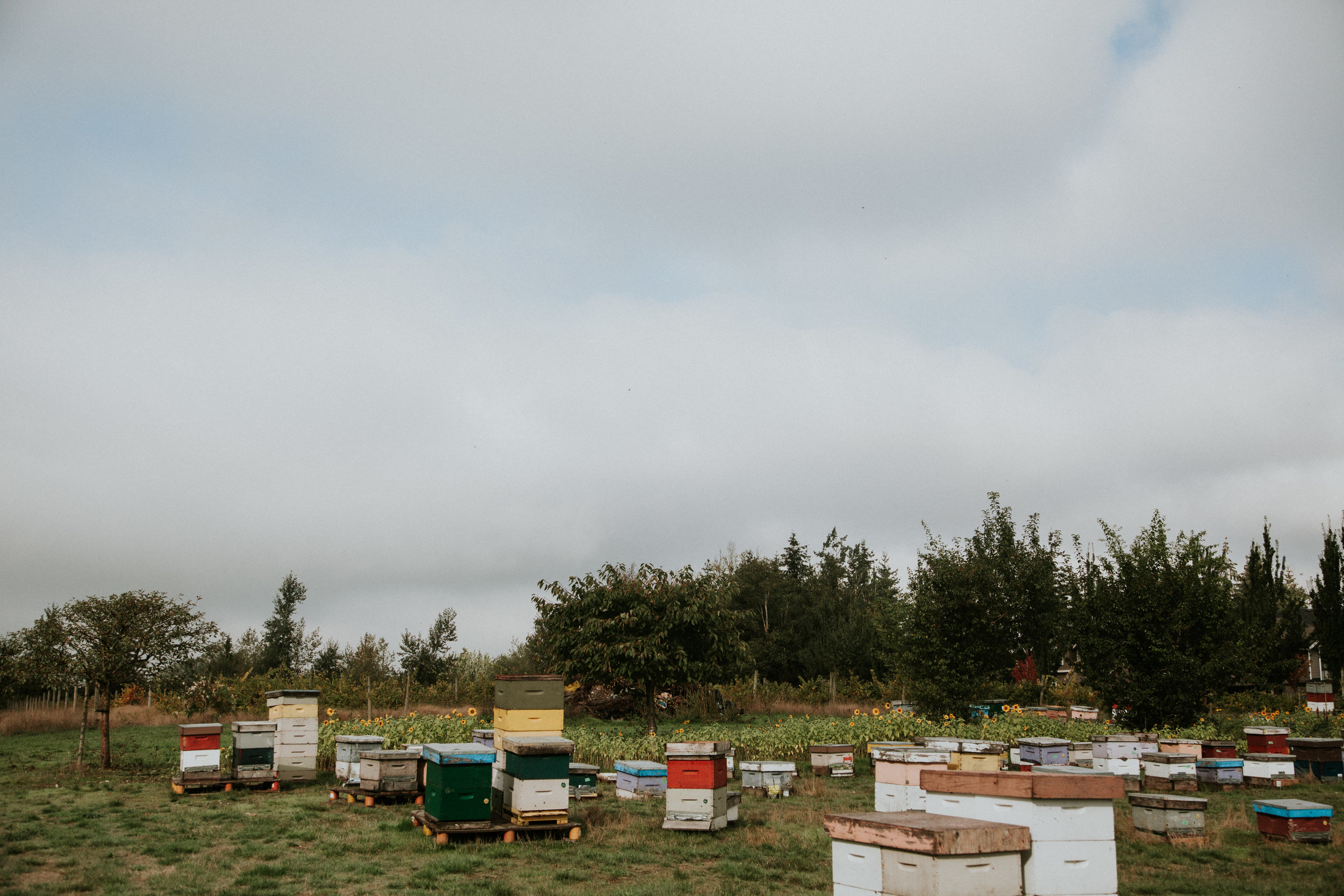

TFV: Who are some of your favourite locals and businesses you’ve met and worked with in the Fraser Valley?
CG: We are so fortunate to be a part of the Circle Farm Tours. The Circle Farm Tours, wineries and businesses have tremendous heart and passion for what they do, as well as, produce quality, local goods and fun farm experiences.
TFV: If you could recommend on place in the Fraser Valley, what would it be? Why?
CG: The Fraser Valley is surrounded by mountains and we highly recommend getting to the top of any of them, both for the journey and the reward of the view.
TFV: If you were a destination, where would you be?
CG: If we were a destination, we would be a colony of bees out in the field, because everything we do is for the benefit of the hive and hence each other in the widest sense. We’re all in this together.
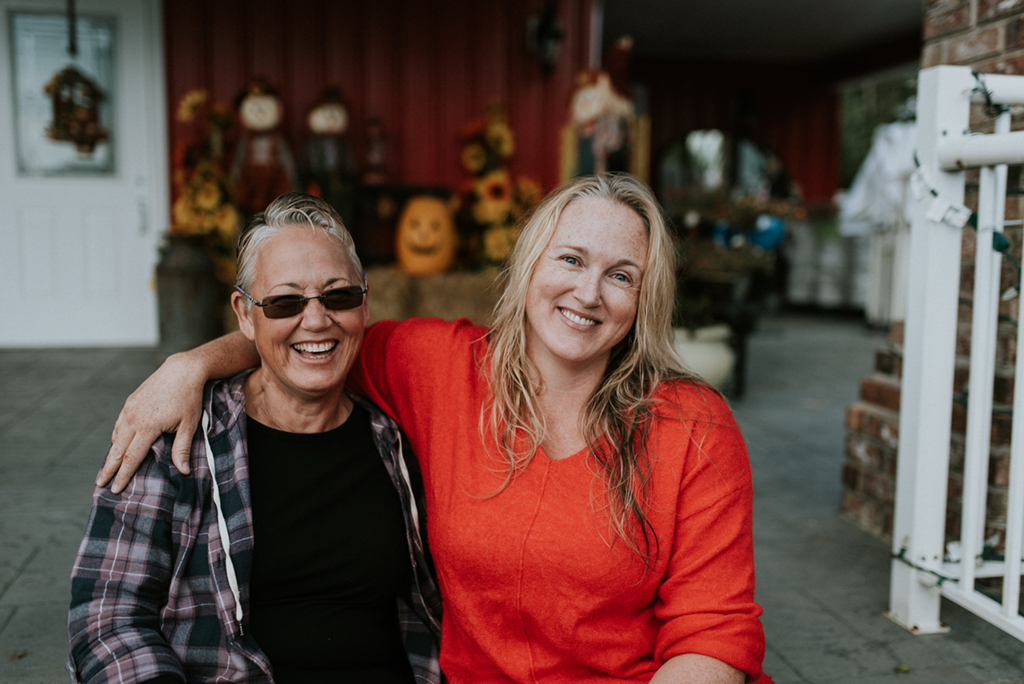
Whether you’re there to visit their shop of honey jars, delightful wines and other goodies, or to take a tour and experience the farm and a live hive, we can promise you’ll leave feeling nothing but love for the Campbell family, local honey farms and the honeybees.
And don’t let any fears get in your way of stopping by! Thanks to this trip, we can happily say we are free from any bee related phobias and are looking forward to seeing them in our gardens next spring.
